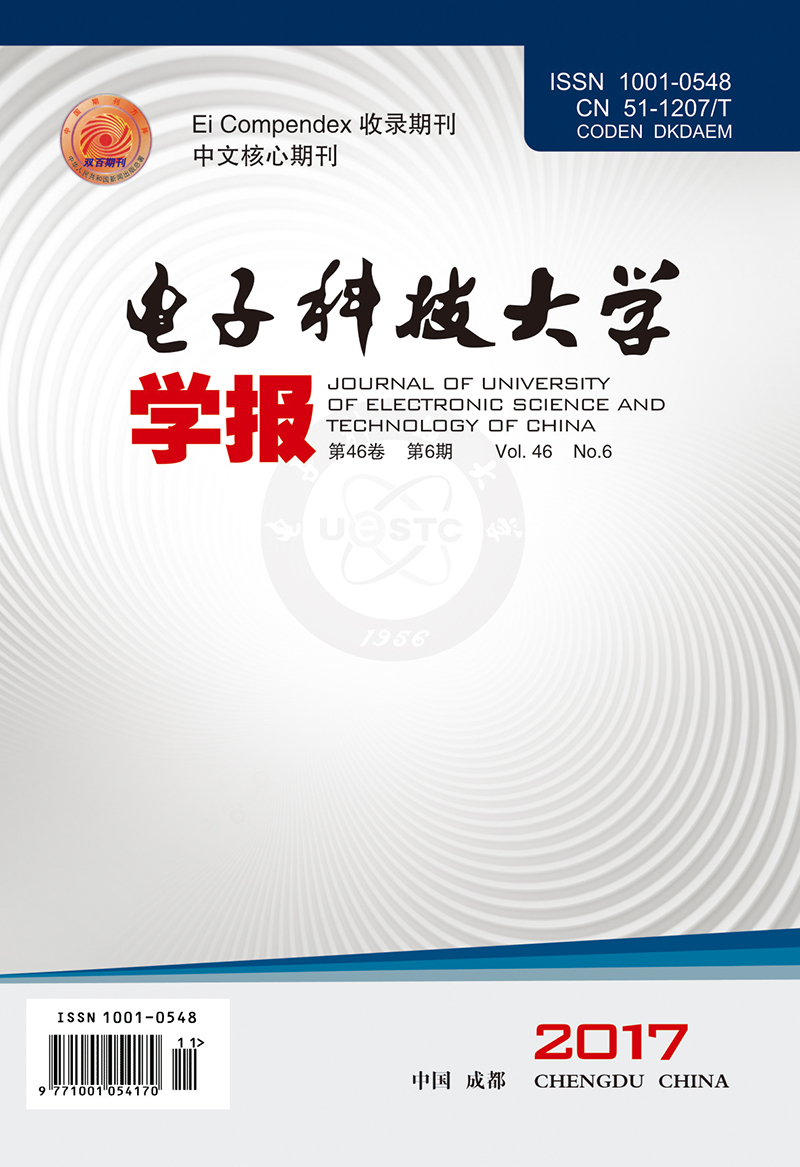-
二十世纪60年代,文献[1]首次合成三元层状陶瓷材料(Mn+1AXn, MAX),其中n可取1~3,M为过渡金属元素,A为IIIA或IVA族元素,X为C或N原子,简写为MAX。MAX晶形为六方晶系,隶属空间群为P63/mmc,沿晶体C轴方向,密堆积的A族原子层与具有岩盐型结构的Mn+1Xn片层交替堆叠而成。该系列化合物兼具陶瓷和金属材料的诸多特点,包括低密度、优良的热电性能、较小的硬度、良好的塑性、抗损伤容限性、抗热震温度高和突出的抗高温氧化性能等。因此,该三元层状陶瓷材料在众多领域中展示出广阔的应用前景和发展潜力。
文献[2]首次合成三元层状化合物Nb2AsC,它是较受关注的陶瓷材料。该化合物与第二类超导体Ti2SC属于异质同晶,在超导领域具有一定的应用前景。同其他MAX材料类似,Nb2AsC在高压下具有较高的稳定性,可以作为性能优良的耐压材料,因此Nb2AsC在高压下的结构和相关性质研究具有重要的理论意义和实用价值。文献[3]通过同步辐射X射线衍射实验的方法研究了Nb2AsC在41 GPa压力范围内的性质。结果表明,Nb2AsC拥有较高的体模量(224 GPa)。理论上,文献[4]基于密度泛函理论计算了Nb2AsC的力学性质。文献[5]研究了Nb2AsC的电子性质,结果表明,Nb2AsC的分态密度显示出的金属性主要是Nb的d电子的贡献。文献[6]研究了零压下Nb2AsC的弹性性质。虽然Nb2AsC有着优良的物理特性,并且在诸多领域有着较大的应用潜力,但是关于Nb2AsC的结构稳定性、力学性能以及热力学性质方面的理论研究较少。基于此,本文采用基于密度泛函理论的第一性原理方法,并结合广义梯度近似(generalized gradient approximation, GGA)研究了Nb2AsC的结构稳定性和弹性性质。此外,还研究了高温高压下Nb2AsC的热力学性质。这一研究将为Nb2AsC的高温高压下的实验研究以及高温高压下相关器件的制作提供理论依据及参考。
HTML
-
本文的计算任务是由基于平面波赝势密度泛函理论的CASTEP软件[7]完成的,并利用广义梯度近似(GGA)来处理交换关联能。为兼顾计算速度与精度的要求,布里渊区的k点采样为9×9×2,平面波截断能取400 eV。采用BFGS算法进行几何结构优化,相关收敛标准设置如下:最大位移偏差不超过0.001 Å,最大应力偏差低于0.05 GPa,原子的能量差值不高于1×10-5 eV/atom。
高温高压下晶体的相关热力学性质可根据准谐德拜理论进行计算。在该模型中,Nb2AsC的非平衡Gibbs函数${G^*}(V;P,T)$形式如下[8]:
式中,E(V)为晶体的总能量;P、V分别表示晶体的压力和体积;Avib为亥姆霍兹振动自由能,其具体表达式为[9-10]:
式中,n为原胞中原子的个数;Θ(V)为德拜温度。对于各向同性固体,泊松比σ=0.25[11],德拜温度可表示为[9]:
式中,根据文献[10]确定f(σ);M为原胞中的分子质量;BS为绝热体模量,代表晶体的压缩率,有[8]:
根据非平衡Gibbs函数${G^*}(V;P,T)$,可计算晶体的热状态方程为:
式中,CV为等容热容;a为热膨胀系数;BT为等温弹性模量,分别用如下形式表示:
式中,γ为Grüneisen参数,$\gamma = - {\rm{d}}\ln \mathit{\Theta }(V)/{\rm{d}}\ln V$。
-
Nb2AsC所属的空间群为P63/mmc,单个单胞中有8个原子,Nb原子位于(1/3, 2/3, z),As原子位于(1/3, 2/3, 3/4),C原子位于(0, 0, 0),因此晶体的结构由晶格常数a和c以及内坐标参数z确定。经过几何优化和计算后,可得到Nb2AsC最稳定的结构,对应的晶格常数a = 3.331 Å,c = 11.960 Å以及内坐标参数z = 0.094 6,与实验值[3]的误差小于4%。以2 GPa的压力间隔连续增加压力至40 GPa,在整个压力范围内优化Nb2AsC晶体,将得到的压力P和体积V的关系。用二阶多项式拟合P-V关系,得到关系式V=114.774 6-0.504 22P+0.003 15P2,结果表明随着压力的增大体积将呈现减小的趋势。根据得到的P-V关系拟合到三阶Birch-Murnaghan方程[12]:
式中,x代表V/V0,得到体弹性模量B0及其对压力的一阶偏导B′,具体结果如表 1所示。由表 1可看出,计算值与相应的实验数据[3]和其他的理论值[5]较为吻合。
弹性常数可描述晶体力学性质以及判断其结构稳定性,弹性性质与材料的诸多基本物理性质密切相关。由对称性可知,六方晶系的Nb2AsC具有5个独立的弹性常数,见表 2。常压下Nb2AsC的弹性常数计算值与密度泛函理论得到的理论值[6]C11=325.3 GPa、C12=113.7 GPa、C13=161.3 GPa、C33=325.8 GPa和C44=150.0 GPa相接近。六方晶系的稳定性判据为${\tilde C_{44}} > 0,{\tilde C_{11}} > \left| {{{\tilde C}_{12}}} \right|$和${\tilde C_{33}}({\tilde C_{11}} + {\tilde C_{12}}) > 2\tilde C_{13}^2$。其中,${\tilde C_{\alpha \alpha }} = {C_{\alpha \alpha }} - P(\alpha = 1,3,4)$,${\tilde C_{12}} = {C_{12}} + P$, ${\tilde C_{13}} = {C_{13}} + P$ [13]。计算表明,优化得到的晶体是力学稳定结构,因为Nb2AsC的弹性常数均符合上述判定条件。晶体的弹性各向异性可根据与方向相关的杨氏模量确定,计算六方晶系杨氏模量为:
Cij/GPa Sij/GPa-1 C11 298.04 S11 0.004 415 C12 113.52 S12 -0.001 004 C13 144.95 S13 -0.001 393 C33 354.92 S33 0.003 955 C44 164.86 S44 0.006 066 式中,S11、S33、S13和S14表示弹性柔度常数,可由晶体的弹性刚度矩阵经一定的变换得到,计算得到的弹性柔度常数S11、S12、S13、S33和S44分别为0.004 415、-0.001 004、-0.001 393、0.003 955和0.006 066 GPa-1。l1、l2和l3表示沿给定方向对坐标轴的方向余弦。计算得到分别沿[001]、[100]和[010]方向上的杨氏模量为252.84、226.50、226.50 GPa,结果表明六方晶系Nb2AsC是各向异性。
-
高温高压下,Nb2AsC的热力学性质可根据准谐德拜模型计算获得。压力和温度对等温体模量BT的影响,如图 1所示。由图可以看出,压力升高引起等温体模量随之线性增加,并且在相同的压力条件下,与高温时的情形相比低温的体弹性模量更高,这说明当外界应力相同时,高温下Nb2AsC内产生的应变大于低温时的情形,即在高温时Nb2AsC更容易被压缩。图 1b中,在压力的作用下,等温体模量随着温度的增加而急剧下降,且低压下等温体模量下降比高压下明显。
热膨胀系数α随压力和温度的变化关系如图 2所示。在温度一定时,热膨胀系数随压力的增加急剧减小;压力一定,升高温度热膨胀系数随之增加,600~1 200 K范围内热膨胀系数增加比较平缓,而300~600 K区间内随温度的升高热膨胀系数增加更为显著,表明随着温度的升高,热膨胀效应会逐渐地受到抑制。由此表明,升温和降压可对Nb2AsC的热膨胀性质产生相似影响。
图 3a中的曲线表示温度对德拜温度Θ的影响。德拜温度是一个较重要的热力学参数,它是高温温度范围和低温温度范围的分界线。如果T > Θ,所有振动模式都能被激发,每个振动模式的平均能量为kBT;而T < Θ,声子开始冻结[14]。从图中发现,在固定压力下Θ随着温度的升高而逐渐减小,而高压下这种趋势会逐渐趋于平缓。等容热容CV受温度的影响如图 3b所示。图中结果表明,一定压力下,温度升高热容随之增加,持续升高温度热容将会趋于常数而不随温度改变,这与Dulong-Petit定律相符,即高温下体系的等容热容为12R(R=8.314 J·mol-1·K-1),而且在较低温度下(0~300 K),与高压情形相比,低压热容随温度的变化更为明显。给定温度,热容随压力的升高而减小,但是当温度高于1 000 K,压力对热容的影响将变得微弱,高压和低压的热容都会趋于一个常数。
2.1. 结构及弹性性质
2.2. 热力学性质
-
本文采用基于密度泛函理论的第一性原理方法,结合广义梯度近似(GGA)研究了Nb2AsC的结构、弹性和热力学性质。与其他实验值和理论结果相比,计算的晶体结构常数、弹性性质等均与之符合较好。常压下,六方晶系Nb2AsC是力学稳定结构,这是因为Nb2AsC的弹性常数符合力学稳定准则。此外,本文还预测了Nb2AsC的杨氏模量,结果表明六方晶系Nb2AsC是各向异性。根据准谐德拜理论,计算了高温高压下Nb2AsC的等温热容、等温弹性模量、德拜温度、热膨胀系数等相关热力学性质,这将对高温高压下Nb2AsC材料的进一步合理利用提供一定的理论依据。

 ISSN
ISSN 











 DownLoad:
DownLoad:

